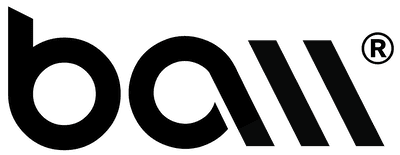In Part One, we discovered how Argumentation: The Study of Effective Reasoning and Thank You for Arguing have modernized the 2,300 years old ideas of Aristotle’s Rhetoric for mastering the art of persuasion. In Part Two, we explored how the books Think Again and Win Every Argument teach leaders to embrace rethinking and refine their communication skills. Now, in Part Three, we venture deeper into the realm of critical thinking. This time guided by Carl Sagan’s The Demon-Haunted World: Science as a Candle in the Dark and Shane Parrish’s Clear Thinking: Turning Ordinary Moments into Extraordinary Results.
The books complement each other perfectly and have modernized these ideas into actionable tools for navigating business, relationships, and life itself. Sagan urges us to embrace skepticism, evidence, and rational inquiry in a world clouded by biases. Parrish provides practical strategies to develop mental clarity and discipline. Together, they offer an intellectual roadmap for navigating uncertainty, avoiding cognitive pitfalls, and thriving in complexity.
But let’s first put this into perspective: critical thinking isn’t a natural default. It’s not like we wake up one day, suddenly immune to cognitive bias or irrational impulses. It’s a practice. A muscle you build over time. Trust me, I’ve been there. Early in my career, I often let instinct and gut feelings guide decisions. Only to realise later how flawed some of those calls were. Today, I’m sharper, more deliberate, and equipped with mental tools I couldn’t have dreamed of two decades ago. And that transformation didn’t happen overnight. It started small, with countless missteps along the way.
The Candle of Science: Sagan’s Guide to Skepticism and Rationality
Carl Sagan’s The Demon-Haunted World is a passionate defense of scientific thinking. He argues that in a world rife with misinformation, cognitive bias, and pseudoscience, the ability to think critically is not just a skill but a necessity. He introduces the “Baloney Detection Kit,” a set of principles for evaluating the validity of claims. Sagan applies these principles to scientific inquiry, we will explore their relevance to business decision-making.Business Application: Sagan’s Baloney Detection Kit in Action
Here are the key principles of the Baloney Detection Kit and how they translate into the entrepreneurial world:- Encourage Intellectual Humility Sagan reminds us to embrace the possibility of being wrong. Leaders who admit their limitations and seek input from diverse perspectives are better equipped to avoid blind spots. This ties directly to Adam Grant’s idea of adopting a “scientist mindset.” Imagine a CEO who insists that a new product will succeed despite evidence to the contrary. By fostering intellectual humility, this leader could instead pivot early, saving the company resources and morale.
- Beware of Logical Fallacies Sagan highlights common logical fallacies like false dichotomies, slippery slopes, and appeals to authority. These pitfalls often derail business discussions. A startup founder arguing, “If we don’t launch this feature now, we’ll lose the entire market” is engaging in a false dichotomy. The reality often lies in exploring a middle ground.
- Seek Independent Verification Don’t take data or opinions at face value. Always look for corroborating evidence from multiple sources. If a competitor claims to dominate a market segment, validate this claim through independent research or customer interviews rather than basing strategic decisions on hearsay.
- Distinguish Correlation from Causation Just because two events occur together doesn’t mean one caused the other. This simple principle can prevent expensive missteps. A company might see higher sales after hiring a new marketing agency and assume the agency is the cause. But independent factors like seasonality or market shifts might be driving the increase.
The Psychological Basis: Why We Need a “Baloney Detection Kit”
Our brains are wired for shortcuts. Cognitive biases like confirmation bias (seeking evidence that supports what we already believe) and availability bias (overestimating the importance of recent information) can distort our judgment. Research in behavioral psychology shows that applying structured methods like Sagan’s kit reduces these errors, improving both accuracy and confidence in decision-making.Clear Thinking Amid Chaos: Shane Parrish’s Mental Models for Leaders
While Sagan’s work provides a philosophical foundation for critical thinking, Shane Parrish’s Clear Thinking is a pragmatic guide to making better decisions. Parrish draws on lessons from psychology, philosophy, and economics to offer tools that help leaders untangle complexity and focus on what matters most.Business Application: Parrish’s Mental Models
Parrish advocates for using “mental models”. Concepts that simplify and clarify decision-making. Here are three standout models and how they can transform your approach:- First Principles Thinking Instead of reasoning by analogy (comparing to similar situations), break a problem down to its fundamental truths. This method, famously used by Elon Musk, encourages innovative solutions. A company struggling with high logistics costs might default to copying competitors’ strategies. But by starting with first principles, e.g., asking “What is the actual cost of moving a product from A to B?” – they might discover new ways to streamline the process.
- Opportunity Cost Every decision involves trade-offs. Understanding what you’re giving up when choosing one path over another is key to prioritization. When deciding whether to pursue a new market, consider not just the potential revenue but also the resources diverted from existing profitable ventures.
- Inversion Instead of asking, “How do we succeed?” ask, “What would guarantee failure?” This perspective often highlights overlooked risks. If launching a new product, inversion might reveal risks like inadequate market research or overpromising features. Problems you can proactively address.
Depth Psychology and the Unconscious Forces at Play
One of the most intriguing intersections of leadership and critical thinking lies in depth psychology, particularly Carl Jung’s exploration of the unconscious. Jung argued that much of our thinking is guided by the tension and conflicts of unrealised aspects of our personality, instincts and archetypes – universal symbols and narratives deeply embedded in the human psyche. These archetypes influence our perceptions, motivations, and even the decisions we believe are purely rational. Think of your unconscious mind as a hidden operating system running in the background. It influences everything. From the way you interpret a competitor’s actions to how you approach a risky decision. Yet, because these influences are hidden, they can steer you toward biases and blind spots if left unchecked. Jung’s concept of the shadow, the parts of ourselves we suppress or ignore, adds another layer of complexity. The shadow isn’t inherently negative; it’s simply unacknowledged. For leaders, this could mean suppressing doubts about a strategy. Avoiding a difficult conversation with a partner, or overcompensating for insecurities by pushing an overly aggressive agenda.Business Application: Unearthing Unconscious Biases
In leadership, Jung’s idea of shadow work, bringing unconscious influences into conscious awareness, aligns closely with Sagan’s and Parrish’s teachings on critical thinking. If you’re unaware of your biases, you can’t question them. But if you take the time to unearth and examine them, you gain clarity and control. Put yourself in the shoes of a founder that drives their team relentlessly toward an aggressive growth goal, believing it’s the only path to success. On reflection, you might realize this urgency stems not from market conditions but from a personal fear of failure. A fear rooted in having taken on large angel investments from relatives and friends, past experiences or societal expectations. Recognizing this bias allows you then to re-evaluate your approach, balancing ambition with sustainability. How to Apply This:- Self-Reflection Practices: Set aside time to reflect on major decisions. Ask yourself, “Why am I leaning this way? Is this choice serving my goals or satisfying an unconscious need?”
- Feedback Loops: Invite trusted team members to challenge your assumptions. Often, others can see your blind spots more clearly than you can.
- Explore Archetypes: Consider how archetypes may be influencing your leadership style. Are you embodying the “Hero,” pushing your team to extremes? Or the “Scientist,” relying too heavily on data without trusting intuition? Balance these roles to lead more effectively.
A Unified Framework for Navigating Complexity
Leaders often face decisions that feel like puzzles with missing pieces. Sagan’s scientific rigor, Parrish’s mental clarity, and Jung’s insights into the unconscious provide a toolkit for piecing those puzzles together. The power lies in combining their approaches into a cohesive framework that doesn’t just address surface-level issues but tackles the deeper roots of challenges.Adopt a Skeptical but Open Mindset
Sagan’s Baloney Detection Kit reminds us to question everything but with an openness to new perspectives. It’s a balance between skepticism and curiosity. Leaders who adopt this mindset avoid becoming rigid or dogmatic while maintaining intellectual integrity. Let’s say you might receive conflicting advice from investors: one urges rapid scaling, while another recommends a cautious approach. Using skepticism, you question the assumptions behind both recommendations, seeking independent data. At the same time, openness allows you to explore a hybrid approach that aligns with your unique market position.Simplify Complexity with Mental Models
Parrish’s mental models offer a way to distill complexity into actionable insights. Concepts like Inversion (“What would failure look like?”) and First Principles Thinking (“What do we know to be fundamentally true?”) are invaluable for cutting through noise and arriving at clear decisions. Imagine you debate whether to launch a new product line. Using Inversion, you and your team identify factors that could lead to failure. Like insufficient market research or overextending resources. By addressing these risks upfront, you can create a stronger launch plan.Confront Internal Narratives
Jung’s depth psychology challenges leaders to examine their inner narratives. Are you stuck in the “Lone Wolf” archetype, trying to shoulder all the responsibility? Or perhaps the “Perfectionist,” avoiding decisions for fear of making the wrong choice? Recognizing these patterns allows you to rewrite the script your operating system runs. Deliberately aligning your future actions with your authentic self. A founder struggling to delegate might realize their reluctance stems from a need to prove their worth. Addressing this fear not only improves their leadership but also empowers their team to step up.Lighting the Path Forward
Part One was about mastering the art of persuasion and effective arguing – exploring the messy, internal world of biases and unconscious forces. Part Two dived into the external tools of critical thinking and rethinking strategies as well as the egos role in it. Part Three brings it all together. With the sharp tools of scientific thinking, structured clarity, and a dash of psychological depth, you’ll be ready to communicate more clearly, rethink your strategies efficiently, and influence others with confidence. The journey isn’t just about making better decisions. It’s about becoming a better decision-maker. It’s about aligning your external strategies with your internal growth. As I reflect on my own path: one decade of trial, error, and relentless self-improvement followed by another decade of steadily increasing success, I see how these tools have shaped not only my work but also my perspective on life. The habits I’ve built, the mental clarity I’ve developed, and the self-awareness I’ve cultivated didn’t emerge overnight. They were forged through small steps, hard lessons, and moments of introspection.
So here’s my challenge to you: Begin where you are, even if it’s with a single question. Challenge a long-held assumption, no matter how small it seems. Get comfortable with the unknown, because uncertainty isn’t your enemy. It’s your greatest opportunity for growth. Take one step today toward refining how you think, lead, and decide. Use “I don’t know – tell me more”, more often. And don’t stop there. Share your insights, empower your team to do the same, and watch how this collective curiosity transforms the way you all approach challenges.
Leadership isn’t just about charting the best path forward. It’s about becoming a lighthouse for others. The clarity you cultivate in your thinking and the rigour you apply in your decisions will not only guide you. It will inspire those who follow your lead. Remember, every great movement starts with one brave step into the unknown. So, why should it not be you who takes that step?
Takeaways
- Challenge Assumptions: Use Sagan’s Baloney Detection Kit to question beliefs, verify data, and avoid logical fallacies.
- Simplify Complexity: Leverage Parrish’s mental models like First Principles Thinking and Inversion to clarify decisions.
- Explore Inner Narratives: Apply Jung’s concept of shadow work to uncover unconscious biases and realign your decision-making.
- Foster Intellectual Humility: Encourage a culture where questioning and rethinking are valued over certainty.
- Balance Science and Intuition: Marry evidence-based reasoning with self-awareness to lead with both clarity and authenticity.




